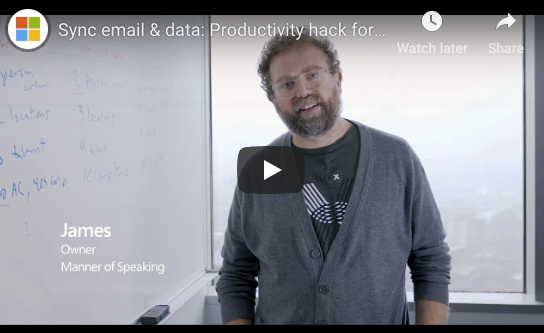
Small business growth is a challenge of keeping up with success without crumbling under commercial weight.
Many improvements needed to reach the next stage of success can be prohibitively expensive, leading to debt and risky gambles that could fail from random chance even if you’re doing everything right.
Tech growth opportunities are becoming more affordable every day. Here are a few details to help you understand how tech outsourcing can improve your business growth.
Reduce Utility Costs
How much power does it take to run a server? What about a room of desktops?
Do you think that equipping everyone with a smartphone or tablet will solve your electrical problems? Not if they still need a server to manage files or run a website.
What about your network equipment? If your business is growing and has heavy network needs, you’re still paying for routers, switches, and hubs. What is the electrical load on those devices?
The answer to those questions is different for every business, but they’re still a cost that can be observed. Every minute of every connected device means more ticks added to your company’s electrical meter, and that adds up over time.
Not every business can operate as a lean, agile tech dream that swipes its way through the cloud. Many businesses still need desktop computers or all-in-one solutions for heavy-duty computing tasks.
Servers are still necessary for any business, whether it’s to share bulk files through the business, host a global customer-facing website, or render complex graphics. All of these tasks generate heat, which means more electricity used in cooling from air conditioning systems.
This could be a good time to discuss the best way to cool a server room. Discussions about central air versus directed pipes, water cooling for high-performance graphic design or scientific research computer may be necessary.
You could build a data center for your growing, small business. You could also struggle through a swamp of growth, making it harder to break that plateau between a small business and a powerful enterprise.
Or you could make it someone else’s problem.
Cloud Computing Turns Tech Needs Into Simple Services
Outsourcing IT services such as web servers, file hosting servers, backup systems, or even workstations is easier than ever. There may be a lot going on in the background, but for you, it’s simple: power up, log on, and access your cloud services.
Almost anything digital can operate across cloud computing. Your business could use a standard internet connection to log into outsourced servers that hold your business files and work with virtual computers that do a lot more than the standard desktop or laptop.
Virtualization allows you to spend less money on powerful workstations. Basic, reliable workstations can be installed to log in, and as long as they can handle a few basic office tasks, they can log into a virtual server.
This server and its virtual workstations are carved from massive cloud computing resources to fit the mold of what you need. Virtual machines can be erased and rebuilt quickly, and can be configured to fit greater needs as long as you give virtualization engineers a reliable set of requirements.
It all comes together to an easier to understand, consistent, and probably lower bill for your tech assets. Your business can grow on the cloud, and you can perform estimates to figure out when—if ever—you need to split off to your own IT infrastructure.
Keep in mind that great businesses still use these services as they grow to behemoths that control global commerce. Just because they can afford to build their own systems doesn’t mean it’s efficient, and it can be more cost-effective to seek outsourced IT partnerships for specific projects.
Do you have high-security data that can’t be compromised? By all means, protect what needs protecting and outsource anything else.
That said, be sure to bring up your security requirements with a system engineer. You may discover that their security standards are higher than your own, or you could enter an agreement to modernize your security.
By working with outsourced IT professionals, you’re not just buying a single service and ignoring them for everything else. If your partnered professionals lack the skills or resources for a specific task, they know where to find someone who fits the job.
Reduce Staffing Overhead
How much does the average IT professional cost? It’s more than just their salary.
When hiring a technician or engineer for a necessary, meaningful position, they need to work at peak efficiency. Just like the hardware and software they manage, a technician needs maintenance, updates, and continued relevance in the business.
A good technician can handle the task at hand. A great technician grows into new challenges, searches for other tasks that leaders may not have noticed, and innovates.
To create a great environment for IT professionals, a business needs to provide training and encourage participation in multiple industry events. They need to have their finger on the pulse of your business ventures and know their own tech potential, which often means reaching into other industries.
While doing all of this, IT professionals need to do the job that you give them. They also need to sleep. They probably need a personal life, but the work-life balance is always a touchy subject.
The question is simple: can you afford that kind of technician?
If your business isn’t creating a bleeding-edge engineer as an incubator of industry progress, neither you nor that technician is reaching their greatest potential. You’re paying them for a specific set of tasks, and in order to grow, that technician will need to reach outside of the business for their growth.
If they reach too far, you may lose that technician and the few growth opportunities you were able to pay forward. Instead, create a partnership with a business that deals in technician growth.
Outsourced IT solutions from managed IT businesses will give you access to trained technicians who are ready to handle your challenges. You are the task, the goal, and the client. You are not, however, responsible for building an entire technician.
Education And Training A Benefit, Not A Cost
Your business is still part of that growth and still provides benefits. Like any profession, experience is a steady march forward through workplaces, job sites, and challenges. Someone else is helping that technician grow, and that’s okay.
Unless your business is centered on IT education—or if you’re an engineer who really likes taking other engineers under your wing—this is a better deal for everyone involved. Tasks can be spread out across multiple technicians who can handle the same projects, but you’re quoted for the service that you purchase.
You’re not responsible for posting job applications on Indeed or CareerBuilder. You’re not responsible for sending technicians to expensive seminars with questionable benefits.
While there’s nothing wrong with taking interest in an outsourced technician’s training or even suggesting a path, the distinction is important: your business won’t sink or swim if you’re not paying for their classroom and self-study growth.
Contact an IT support professional to discuss other ways to enhance your business growth.












